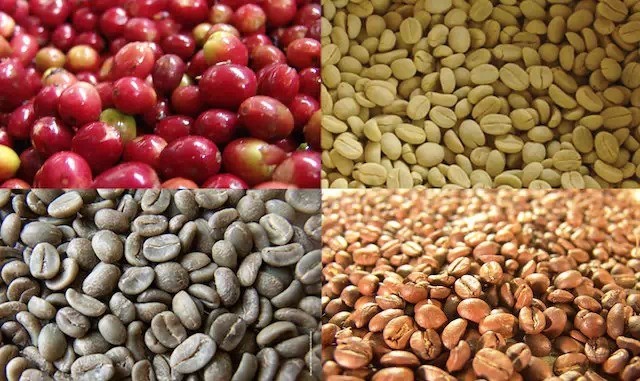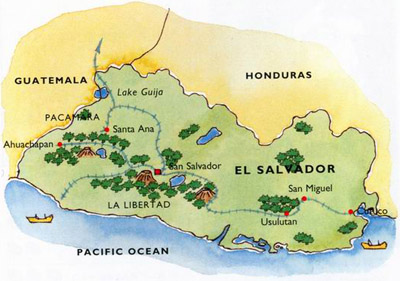Knowledge of the classification of coffee beans: the difference between selected coffee and commercial coffee
The significance of selected Coffee
The concept of select coffee originated from a coffee business model many years ago. Around the turn of the century, some old coffee shops were selling high-end beans to be proud of. The old chef baked the beans behind the counter and immediately sold them from the front, so customers were guaranteed to have good fresh coffee. However, due to the success of the industrial revolution, people walked from their families into factories and offices, the pace of life became tense and busy, and everything began to crave convenience and speed; coupled with the strong sound and light temptation of the national commercial advertisement for commercial coffee, the selected coffee was gradually forgotten, and it was not until after the 1970s that it was aroused by a group of conscientious people and rapidly increased its market share.
So far, no one dares to define a selection of coffee. It is not a variety, nor a trademark, nor a brand; it is a concept, a comprehensive phenomenon of coffee quality and flavor. We can understand what a selection of coffee is from the following angles.
Coffee in terms of variety
The main varieties of coffee are "Aribica" and "Robusta". The former grows in cool areas of the highlands, has a better flavor, accounts for about 70% of the world coffee production, and is the main source of selected coffee; the latter grows in low elevations, has strong disease resistance, but has a bad flavor and has a strange taste, accounting for about 30% of the world coffee production.
However, not all Arabica beans are selected coffee, only a few high-end beans come from high mountain areas, or after strict selection and classification, they are considered selected coffee because of their hard texture, rich taste and excellent flavor. It only accounts for about 10% of the world's coffee production. As for Robusta beans almost all enter the commercial coffee market, only a very small number of fine beans can be regarded as selected coffee.
Looking at coffee from the way it is handled
Due to the different ripening time of coffee fruit, good coffee must be harvested by hand 6 times. In the process of treatment, no matter using the sun method or water washing method, we have to be careful, and the coffee beans have to go through strict selection and classification to ensure the stability of their quality. Therefore, although some areas have good local conditions and can produce excellent coffee, they can not be classified as fine coffee if they are not handled properly or are just leftover inferior products. For example, almost all Brazilian beans are Arabica, but most of them are harvested by machines, leading to a mixture of good and bad; and like some of the lower grades of Mantenin, they are the second-grade products left after selection, and they cannot be regarded as selected coffee.
Many years ago, the CEO of the American selected Coffee Association printed a selection of coffee categories that clearly defined unadulterated raw beans and coffee with special flavors as selections.
In this chart, the next level of selected coffee is "Premium". In fact, it doesn't seem to have any obvious shortcomings, but it still can't be included in the selection. From this, we know that the selection of coffee is absolutely special, far exceeding the level of "it tastes good".
Looking at coffee from the way it is roasted
The year, type, room temperature, moisture content of raw beans are closely related to the baking temperature. Generally speaking, the selected coffee is usually roasted in a small amount, which requires strict testing and analysis in advance, and will not stop until the baking is in the best condition. In this way, the coffee beans can be evenly cooked inside and outside, ensuring the perfect quality. Commercial coffee, on the other hand, uses a lot of roasting in order to roast raw beans to brown, giving people the feeling of coffee.
Select Coffee in terms of freshness
It is an indisputable fact that only fresh coffee can be regarded as selected coffee. The word "fresh" here refers to the freshness after baking, not the freshness of raw beans after harvest. After roasting, the flavor of coffee beans reaches its peak in about 7 days, which is the best time to drink; once stored for too long, the coffee will naturally decay and suffer oxidation, and the flavor will not be as good as it used to be. Therefore, fresh is the basic law of good coffee, not fresh enough coffee can not be said to be selected coffee.
Looking at coffee from the way it is sold
Specialty stores of selected coffee should sell whole beans and let customers take them home and grind them by themselves. As the freshness of coffee beans is very important, the date of baking should be kept within 7 days in order to make a good coffee. On the contrary, commercial coffee uses iron cans, glass cans or plastic bags to pack poor coffee beans, coffee powder or instant coffee, leaving it on the shelf waiting for customers who accidentally come to the door.
Generally speaking, if selected coffee stores also sell coffee drinks, they will certainly use fresh beans, freshly ground and boiled, and bring out a cup of fresh and delicious coffee; if you use stale and bad beans, although they have a gorgeous appearance, they cannot be said to be selected coffee.
Coffee from the Perspective of Commodity name
Good coffee beans have their own characteristics, and they are not willing to remain anonymous and are only called "coffee". Therefore, in order to highlight a variety of unique styles, good coffee beans have their own names, such as Blue Mountain in Jamaica, Yirgacheff in Ethiopia, Sulawesi in Indonesia, Antiqua in Guatemala, Kona in Hawaii and so on. Sometimes, it is even marked with a grade as part of the name, such as Kenya's AA (AA is the highest rating in the local classification).
This method is found not only in coffee beans, but also in other commodities, such as Taitung Chi Shang Mi, Ilan garlic, and Tai Ma Li Sakya. Because of its good quality and delicious food, it certainly enjoys its own name and shines magnanimously on the shelves.

Source: Brista blog
Important Notice :
前街咖啡 FrontStreet Coffee has moved to new addredd:
FrontStreet Coffee Address: 315,Donghua East Road,GuangZhou
Tel:020 38364473
- Prev

The standard of SCAA pecialty Coffee boutique coffee raw beans is necessary for a good cup of coffee.
The raw bean defects of SCAA can be divided into two types: I and II. The requirement for premium coffee grade (specialty coffee) is: 1. There are no class I defects; 2. No more than 5 II class defects 3. There can be no "quaker" (0 quaker) Quick beans in cooked coffee beans. 4. The color range of raw coffee beans is pale yellow (light yellow), yellow-green (
- Next

Boutique coffee beans: Ataisi Manor in El Salvador, micro-batch washing Pacamara Pacamara
Coffee bean details: 1. Country: El Salvador 2. Grade: SHG 3. Production area: Izalco area of Sonsonate province 4. Planting height: 1800 meters 5. Picking season: January 6. Treatment: washing and fermentation, sun drying 7. Variety: Pakamara 8. Manor: Finca Ataisi 9. Flavor: nut chocolate, passion fruit, cream, strawberry El Salvador is located in Central America, north
Related
- Guji coffee producing area of Guji, Ethiopia: Humbela, Shakiso, Wulaga
- What is the most expensive variety of Qiloso in BOP multi-variety group?
- How to store the coffee beans bought home?
- Why are Yemeni coffee beans so rare now?
- Ethiopian Sidamo all Red Fruit Sun Sun Santa Vini Coffee beans
- SOE is mostly sour? What does it mean? Is it a single bean? what's the difference between it and Italian blending?
- Is Italian coffee beans suitable for making hand-brewed coffee?
- How to choose coffee beans when making cold coffee? What kind of coffee beans are suitable for making cold coffee?
- Just entered the pit to make coffee, what kind of coffee beans should be chosen?
- Can only Japan buy real Blue Mountain Coffee? What are authentic Jamaican Blue Mountain coffee beans?

